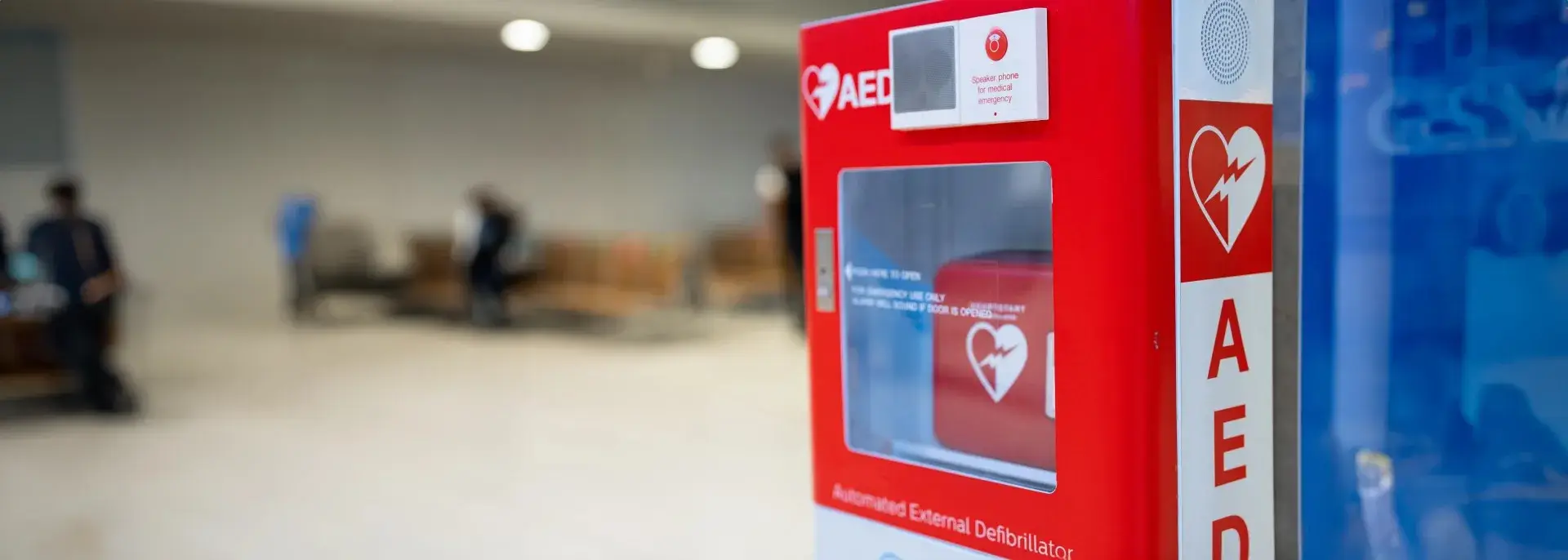
Have you ever wondered what an AED is and why it can be seen in most buildings and offices? Well, you are not alone!

An automated external defibrillator (AED) is a sophisticated, yet user-friendly portable medical device designed to help individuals experiencing sudden cardiac arrest. It can analyse the rhythm of the heart and, if necessary, administer an electrical shock (defibrillation) to help restore a normal and effective rhythm.
AEDs are lifesavers. They play a crucial role in responding to cardiac arrest.
It is important to note that the chances of survival decrease by 7% to 10% with every minute that passes without restoring a normal heartbeat. Immediate CPR (cardiopulmonary resuscitation) and the use of an AED can double or even triple a person's likelihood of survival.
AEDs are meant to be accessible to the general public. They are safe, accurate, portable, and easy to operate. Non-medical personnel, such as police, firefighters, flight attendants, and security guards are AED-trained.
While formal AED training is not mandatory, it is highly recommended as it helps boost your confidence in operating the device.
The AED is equipped with voice prompts, lights, and text instructions to guide the rescuer through the necessary steps.
AEDs typically come with two sets of pads:
It is essential to use adult pads for individuals aged 8 years or older.
When using the AED, follow these steps:
Be prepared to save a life! Learn CPR and familiarise yourself with AED use. Remember, when every second counts, your knowledge and action can make a life-saving difference.
If you or someone you know is experiencing a medical emergency or major trauma, call for an ambulance immediately or head straight to the nearest Pantai Hospital Accident and Emergency (A&E) department for immediate medical attention.
Remember, every second counts in emergency situations! The team of skilled emergency physicians, nurses, and support staff are available 24/7 to provide immediate care and support.
Pantai Hospital has been accredited by the Malaysian Society for Quality in Health (MSQH) for its commitment to patient safety and service quality.

